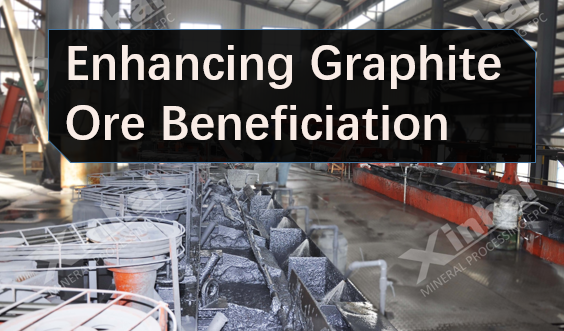Enhancing Graphite Ore Beneficiation: Protecting and Recovering Large-Flake Graphite
2024-09-26 Xinhai (1595)
2024-09-26 Xinhai (1595)
If you have any questions, please contact us through the following ways, we will give you more and better assistance!

Introduction
The beneficiation of graphite ore is a critical process that aims to enhance the quality of concentrate by protecting and recovering large-flake graphite, which is essential for producing high-quality graphite products. During this process, the loss of large-flake graphite can be categorized into two types: inevitable losses that occur during the removal of gangue, damaging the interconnected structure of large flakes, and avoidable losses due to process-related issues.
Reducing avoidable losses is crucial for improving the yield of large-flake graphite in the concentrate. This article explores the optimization of graphite beneficiation processes to protect large-flake graphite and enhance the overall quality of the concentrate.
Conventional graphite beneficiation processes often involve multiple stages of regrinding and reselection of rougher concentrate. When dealing with both large-flake and fine-grained graphite, the combined grinding process can lead to the destruction of large-flake graphite during each regrinding stage. Although optimization and modification can improve the yield of large flakes in the concentrate to some extent, they do not fully address the issue of graphite flake damage caused by hard gangue minerals during initial coarse grinding.

To minimize the loss of large-flake graphite, a rapid flotation process has been developed. This process involves controlling the coarse grinding particle size, allowing the ore to undergo two stages of roughing flotation after a single coarse grinding. The first roughing flotation stage primarily recovers highly liberated large-flake graphite, with its froth advancing to the second and third stages of regrinding.
The second roughing flotation stage aims to recover graphite intergrowths, with its froth proceeding to the first stage of regrinding. By leveraging the difference in flotation rates between liberated single graphite flakes and intergrowths, and controlling the flotation time, this process promptly separates highly liberated or highly liberated large-flake graphite, reducing further grinding and thus protecting the large flakes to a certain extent.